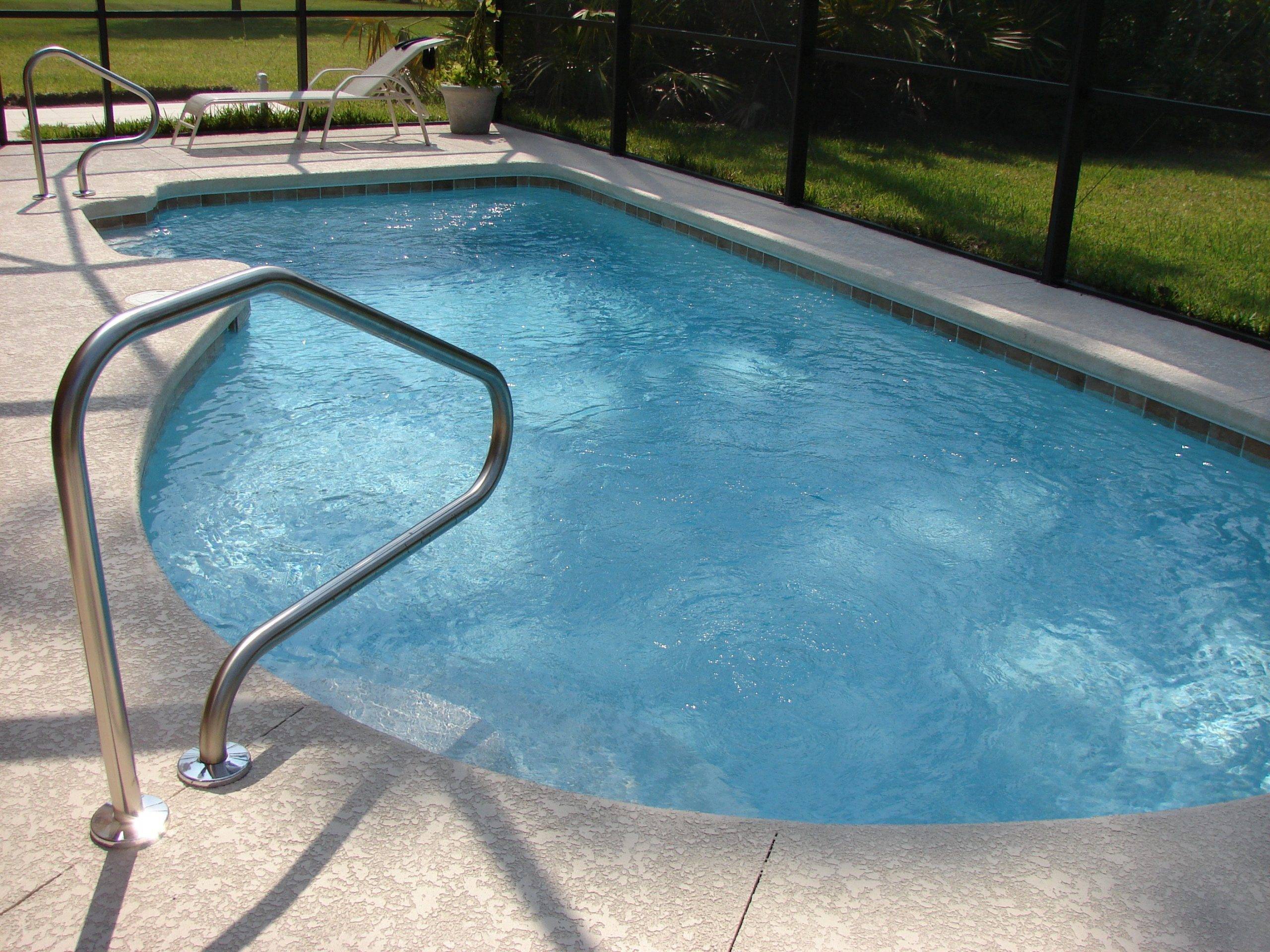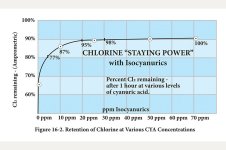I am careful to keep my LSI close to zero and follow the guidelines here, but it seems as though I am using a tremendous amount of chlorine. So much chlorine, in fact, that I have to add it every night. I'm wondering if I'm doing something wrong.
The chlorine chart here recommended a max FC of 7 ppm and a min of 3 ppm. And that is my target when I add chlorine each night (pH = 7.6, TA = 80, CH = 300, CYA = 40, and CC is usually 0.2 ppm or 0 using the Taylor K-2006). But when the sun comes out, my chlorine really drops so that by the next evening, 24 hours later, I'm usually at FC of 3.2 ppm. So I'm achieving my 3 ppm minimum but losing almost 4 ppm per day and I have to add 68 oz of chlorine to get back up to 7 ppm each night. That's a lot of chlorine, baby!
The pool is very clean, looks great smells great, and is exposed to sunlight much of the day. I skim the top once or twice a day, usually twice. Am I going wrong somewhere? So much chlorine so often just doesn't seem sustainable.
Who knows, I might like to occasionally take a day or two off. So I've started looking into other solutions like saltwater, UV, solar ionization, and ozone as ways to lighten my burden. Is saltwater the best way to lighten my load?
So how do professional pool cleaners do it? There is absolutely no way that a pool cleaner could dump chlorine in my pool once a week and keep it above 3 ppm. Are they just pretending to clean your pool? What am I missing? Thank you in advance for your response.
The chlorine chart here recommended a max FC of 7 ppm and a min of 3 ppm. And that is my target when I add chlorine each night (pH = 7.6, TA = 80, CH = 300, CYA = 40, and CC is usually 0.2 ppm or 0 using the Taylor K-2006). But when the sun comes out, my chlorine really drops so that by the next evening, 24 hours later, I'm usually at FC of 3.2 ppm. So I'm achieving my 3 ppm minimum but losing almost 4 ppm per day and I have to add 68 oz of chlorine to get back up to 7 ppm each night. That's a lot of chlorine, baby!
The pool is very clean, looks great smells great, and is exposed to sunlight much of the day. I skim the top once or twice a day, usually twice. Am I going wrong somewhere? So much chlorine so often just doesn't seem sustainable.
Who knows, I might like to occasionally take a day or two off. So I've started looking into other solutions like saltwater, UV, solar ionization, and ozone as ways to lighten my burden. Is saltwater the best way to lighten my load?
So how do professional pool cleaners do it? There is absolutely no way that a pool cleaner could dump chlorine in my pool once a week and keep it above 3 ppm. Are they just pretending to clean your pool? What am I missing? Thank you in advance for your response.




